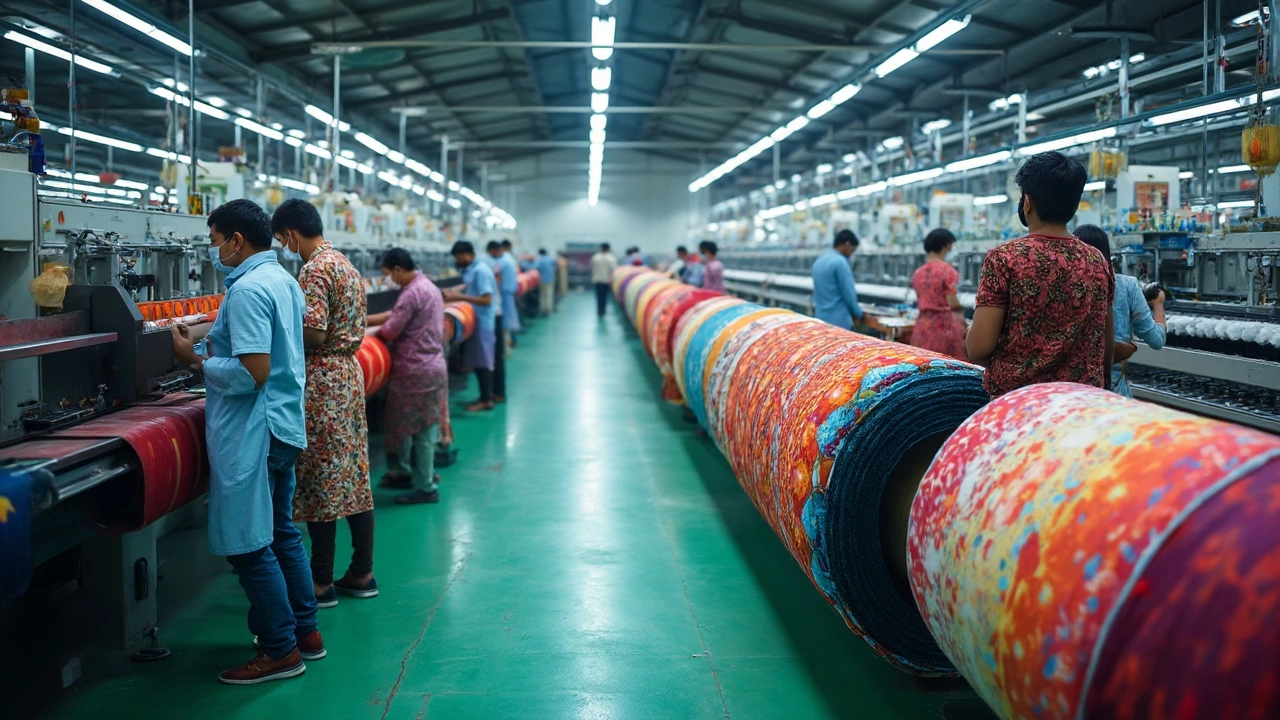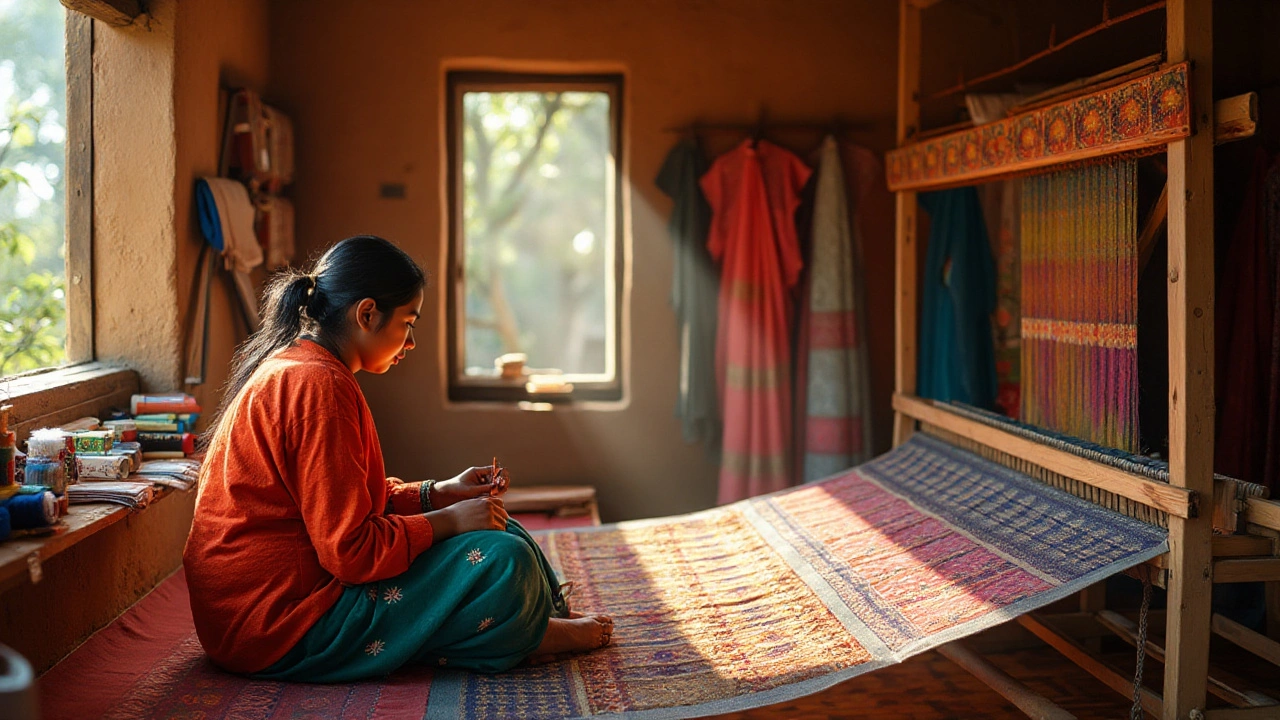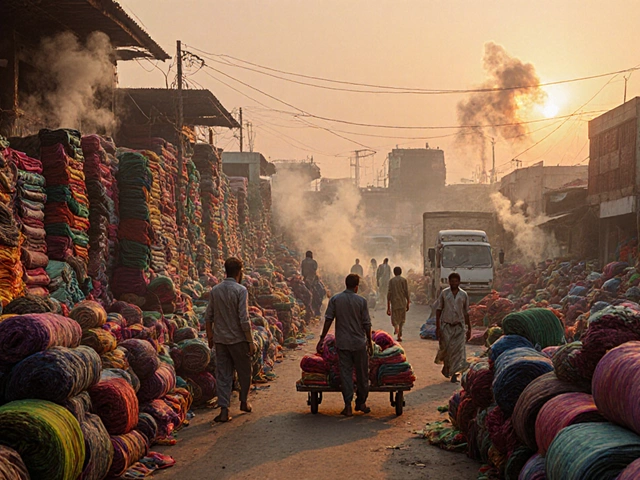Textile Industry: Trends, Opportunities and Practical Tips for 2025
If you’re wondering why the textile world keeps buzzing, you’re in the right spot. The Indian textile sector is humming with new tech, sustainability rules and consumer shifts that spell chances for smart entrepreneurs. Below you’ll find the most useful nuggets to help you spot a win and avoid a flop.
What’s Driving Growth in the Textile Sector?
First off, demand is booming because people want faster fashion, eco‑friendly fabrics and affordable quality. Brands are moving from cotton‑only lines to blends that resist wrinkles, shed water and even track body temperature. That push has supermarkets, e‑commerce sites and traditional tailors all hunting for new suppliers.
Second, the government’s Make in India push gives tax breaks and easier land clearance for factories that meet energy‑efficiency standards. If you install LED lighting or solar panels, you can shave up to 15% off your electricity bill – a real cash saver on a tight margin.
Third, digital tools are leveling the playing field. Cloud‑based inventory software, AI‑driven design assistants and simple e‑commerce platforms let a five‑person workshop sell across the country without a huge upfront investment.
Top Textile Business Ideas for Quick Returns
Technical textiles. Think fabrics used in airbags, medical gowns or automotive interiors. The profit margin here is higher because the material is specialized and orders are often bulk. Start small by partnering with a local yarn mill and focus on a niche like fire‑resistant workwear.
Home‑textile kits. Covid taught us that DIY projects sell. Offer ready‑to‑sew kits for curtains, cushion covers or table runners. Pack the fabric, pattern and easy instructions, then market through Instagram reels. Customers love a project they can finish in a weekend.
Upcycled fashion. Pulling old denim, saris or surplus cotton into fresh designs is both trendy and eco‑friendly. You can start from a single sewing room, source discarded cloth from local markets and price your pieces premium because of the ‘zero‑waste’ story.
Print‑on‑demand apparel. Use digital printing machines that can handle small batches without set‑up costs. Customers pick a design, you print and ship. It eliminates inventory risk and lets you experiment with fresh graphics every month.
Fabric dyeing services. Many small manufacturers lack the equipment for consistent color matching. If you invest in a small but modern dye‑jet system, you can charge per kilo and become the go‑to partner for boutique labels.
Whichever route you choose, keep three things in mind: quality control, reliable delivery and clear pricing. A single missed deadline can sour a brand relationship forever.
Lastly, don’t ignore the power of online reviews. Encourage satisfied buyers to post photos and short notes on your product page. Real‑world feedback does more for sales than any ad you can buy.
Bottom line: the textile industry is still a goldmine for anyone willing to blend traditional know‑how with modern tools. Pick a niche, stay lean, and let the market tell you what works. Your next big profit could be just a stitch away.
Largest Synthetic Textile Manufacturer in India: Who Tops the List?
India is a powerhouse in textile manufacturing, especially when it comes to synthetic textiles. This article uncovers the largest synthetic textile manufacturer in the country and how it impacts the industry as a whole. You'll get interesting facts, practical tips on sourcing, and insights on quality and sustainability trends. Discover what makes this industry tick and which company stands tall above the rest. Perfect for anyone looking to understand or connect with the Indian textile market.
Read MoreRichest Textile Company in the World: Examining the Leaders from India and Beyond
Wondering which textile company is at the top in terms of wealth and scale? This article breaks down the richest textile company worldwide, with a special focus on how Indian giants stack up in the global market. Find out what drives these companies, what sets them apart, and what you can learn if you're eyeing the textile industry yourself. From profits to production scale, get the real numbers and insider insights. Be ready for some surprises—it's not always who you think.
Read MorePopular Fabrics in Indian Textile Industry: A Deep Dive
India's rich textile heritage boasts a diverse range of fabrics, each with its own unique significance. From the cool comfort of cotton to the luxurious luster of silk, these materials highlight both traditional craftsmanship and innovative design. This article explores the most commonly used fabrics in India's textile industry, providing insights into their uses, characteristics, and cultural importance. Discover why these materials continue to play a vital role in India's vibrant textile market.
Read More





